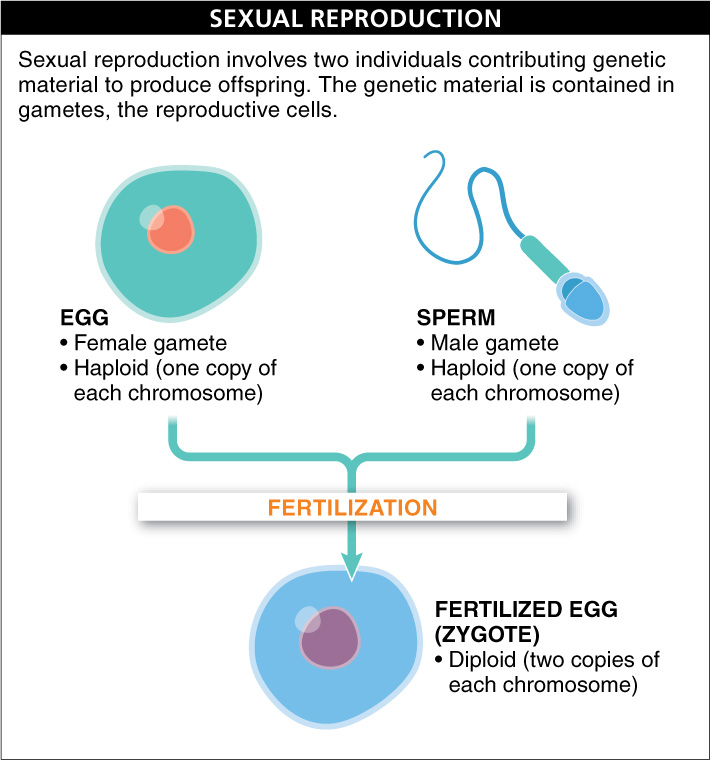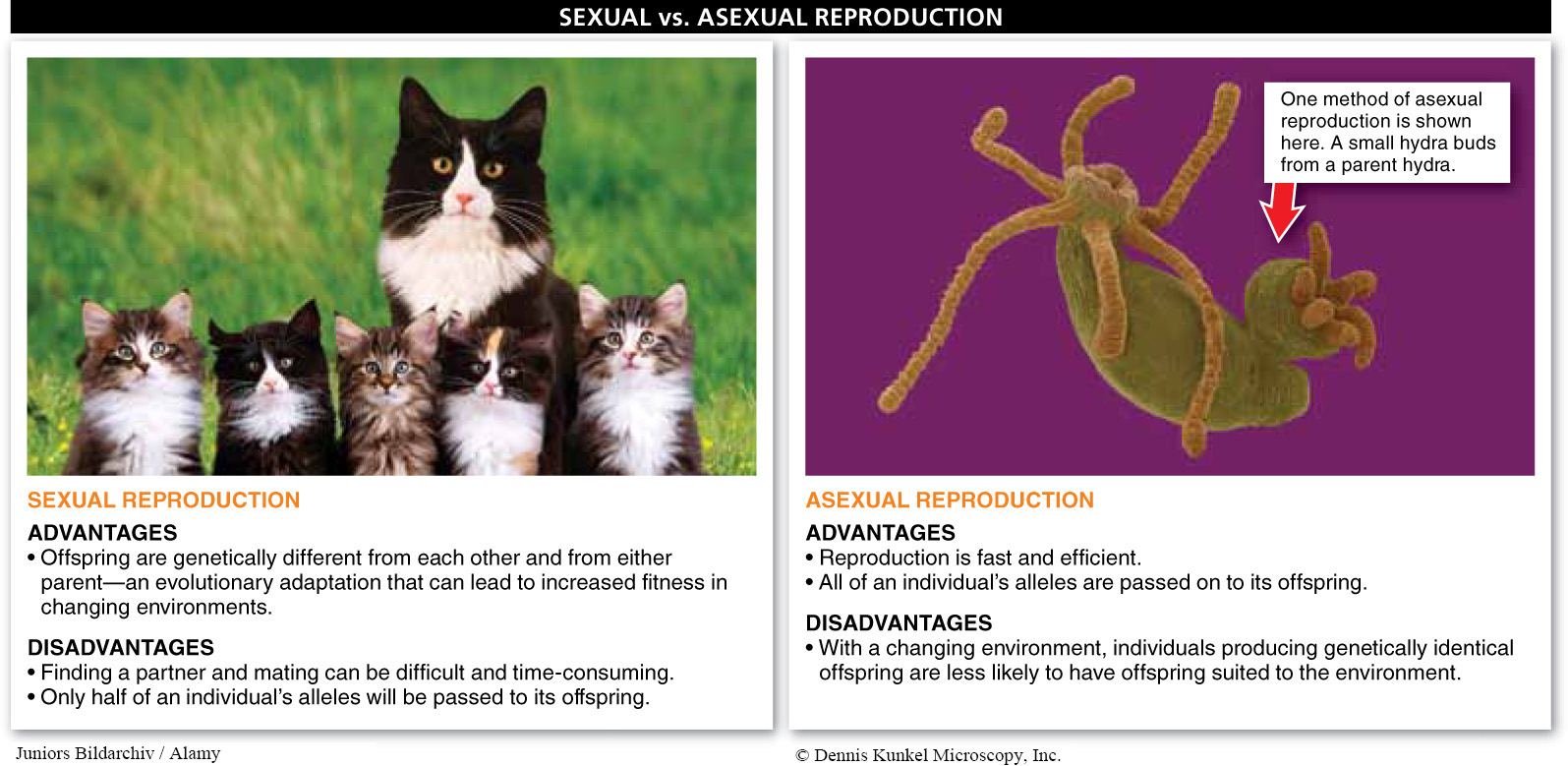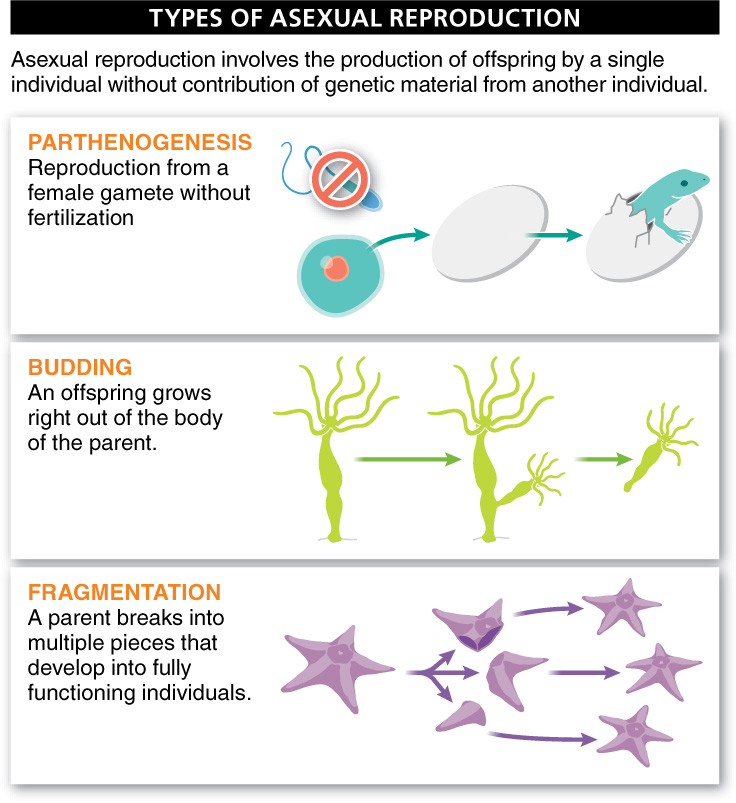25.2: There are costs and benefits to having a partner: sexual versus asexual reproduction.

The term “reproduction,” the process by which new organisms are produced from existing organisms, usually conjures images of a male and a female, producing offspring together. And for most animals, this is how it’s done. But recall from Section 6-
Sexual reproduction involves two individuals contributing genetic material to produce offspring (FIGURE 25-2). The genetic material is contained in gametes, the reproductive cells. The male gamete is called a sperm (or sperm cell) and the female gamete is called an egg or ovum (pl. ova). Recall from Section 6-


An important feature of sexual reproduction is that it leads to offspring that differ genetically from each other and from either parent (see Figure 6-28). This genetic diversity can be an evolutionary adaptation, increasing fitness in changing environments. If an environment is gradually changing, individuals producing diverse offspring increase the likelihood that one of their offspring will be suited, genetically, to the new environment. There are, however, disadvantages to sexual reproduction. The two main drawbacks are that (1) finding a partner and mating can be time-
1006
In contrast to sexual reproduction, asexual reproduction involves the production of offspring by a single individual without a contribution of genetic material from another individual. There are several types of asexual reproduction in animals, including parthenogenesis, budding, and fragmentation (FIGURE 25-4).
1. Parthenogenesis. In parthenogenesis, a female’s egg develops into a new organism without having to be fertilized by a sperm cell. Some species, including the desert grassland whiptail lizard, are exclusively asexual, and all of the individuals in the species are female. Other species can reproduce either asexually or sexually, depending on environmental conditions; parthenogenesis allows them to utilize resources—
Q
Question 25.2
Do female turkeys need males to reproduce?
2. Budding. In budding, an offspring grows directly out of the body of the parent. Hydras, which are predatory cnidarians, reproduce by budding.
1007
3. Fragmentation. In fragmentation, one individual breaks into multiple pieces, each of which develops into a fully functioning, independent individual. Fragmentation is seen among many species of flatworms, as well as some sea stars. Among some sea stars, for example, if even a tiny part of one arm breaks off, it can develop into a complete individual.
Asexual reproduction can be fast and easy, because it involves only a single individual. And if an organism’s environment is stable, it is beneficial for offspring to carry all of the genes that their parent carried. If an environment is changing, however, asexually reproducing organisms may be at a disadvantage.
TAKE-HOME MESSAGE 25.2
Organisms can reproduce sexually or asexually—
Some animals are capable of reproducing either sexually or asexually. What influences the method of reproduction used by these organisms?